
Lake Mead Reptile CommunitiesForty-one species of reptiles and 12 species of amphibians have been recorded at Lake Mead NRA. As might be expected in a warm, desert area, reptiles are common throughout the region. For the most part, they prefer the rocky slopes and dry washes where boulders and brush furnish plenty of shelter and shade. Natural foods are also more likely to be found in this type of habitat. 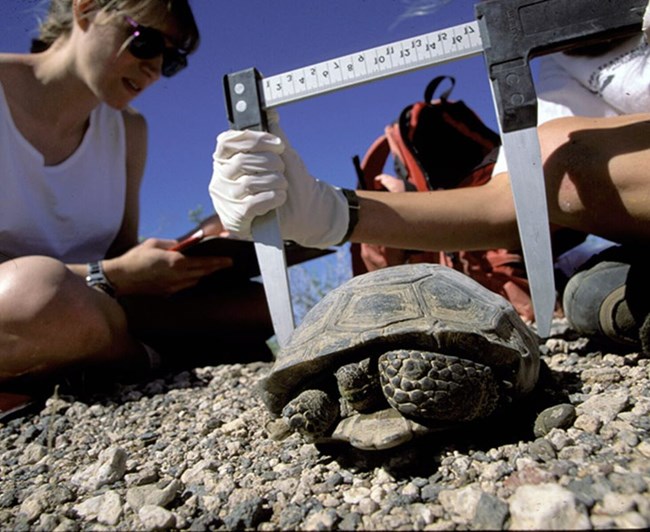
The Desert TortoiseAs Nevada’s state reptile the Desert Tortoise is our only native turtle in the recreation area. The adults may live up to 50 years and are from 8 to 15 inches long. The females lay one clutch of up to 15 eggs each year. The hatchlings are approximately 1 1/2 inches long. The young are preyed upon by a variety of animals, especially the raven.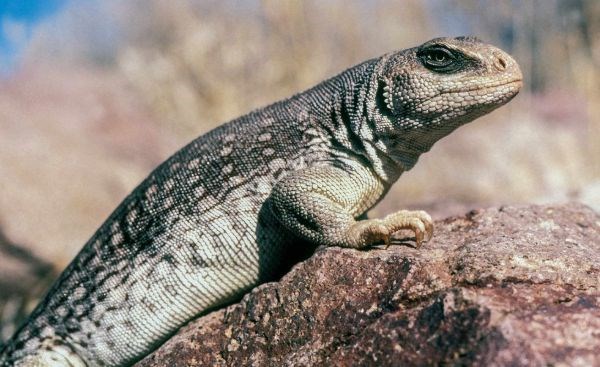
The Desert IguanaLarge, common, and active during the day, the Desert Iguana is one of the more frequently seen and recognized local lizards. It may be up to fourteen inches long and 2/3 of its length is tail. The overall color of this lizard is a gray-brown, but it can vary from light to dark depending upon its internal temperature. The same lizard may appear to be dark brown when it first emerges into the sunlight in the morning, and may then be very light tan to white by mid-afternoon. It has a pattern of spots and bars on its sides and a ridge-like row of enlarged scales along the center of its back. The female lays a clutch of three to eight eggs in early summer.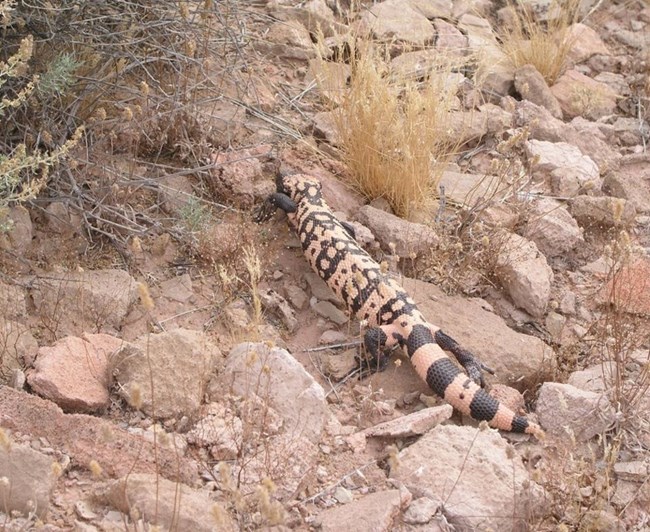
The Gila MonsterThe Gila Monster is rarely seen because of its secretive nature. It has dangerously toxic venom. It is non-aggressive, rarely biting anyone. However, it is not to be trifled with. It is protected by state law in all states where it occurs. The Gila Monster is the only venomous lizard in our area and is one of only two known venomous lizard species in the world. Incidences of Gila Monsters biting humans are extremely rare and must be almost sought by the victim. However, a bite by a Gila Monster is a serious issue. The venom is quite toxic, acting on the respiratory system eventually causing paralysis. The Gila Monster does not have fangs, but instead slowly chews through flesh releasing venom from the floor of the mouth down grooves in its teeth. 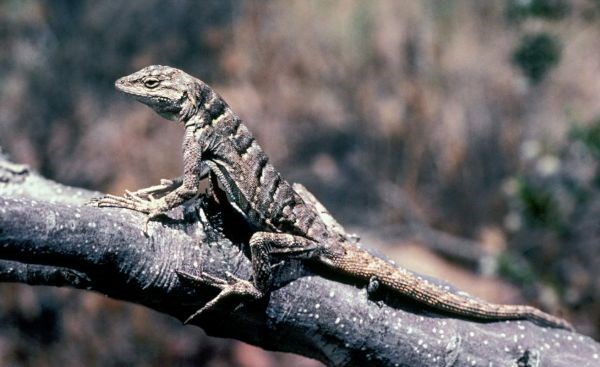
The Long-tailed Brush LizardThe Long-tailed Brush Lizard has a small body of about 2 inches long. This lizard gets its name from its tail which makes up more than 2/3 of its total length of 7 inches long. It is gray to beige with darker markings. Its very long tail is distinctive. The females lay 1 or 2 clutches of 2 to 10 eggs each summer.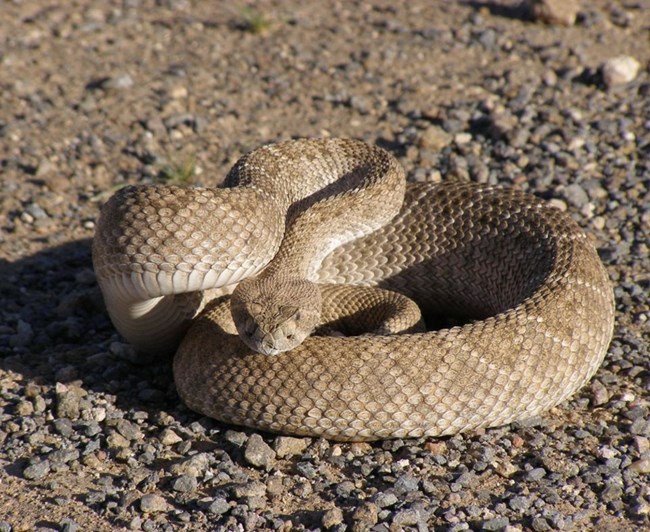
Rattle Snakes (Various Species)There are four species of rattlesnakes found within the recreation area and all are to be considered dangerously venomous. Their venom is quite toxic and their venom delivery is efficient. All have hollow, hypodermic-like fangs in the front of their upper jaw connected by a duct to enlarged venom glands. All have the familiar noise-producing rattle that gives them their name. Treat these snakes with respect. Keep a safe distance and do not attempt to handle them. Any bite requires immediate medical attention. Even newborn rattlesnakes are capable of delivering a potentially dangerous bite.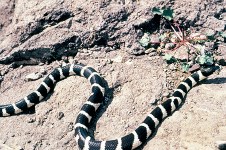
King SnakesThis is one of the best known and most readily identified non-venomous snakes. It is a large snake, 30 to 42 inches long, and has a stout body. It is boldly patterned in black or very dark brown with white to cream colored rings along its entire length. The head width is well defined from the neck, but it is not as pronounced as in the Gopher Snake. It vibrates its tail when annoyed. It is diurnal when temperatures permit and then crepuscular or nocturnal when temperatures climb too high. |
Last updated: January 30, 2024
